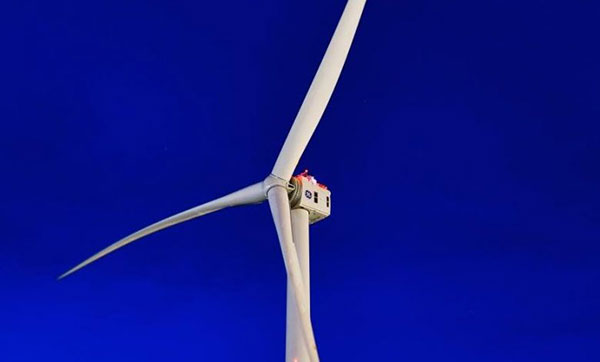Department of Energy Awards $14.9M to GE Research and voxeljet
Monies to be used to develop VX9000 system, a giant sand binder jet 3D printer that will be used to enable the U.S. energy transition.

In October the Haliade X, which is also the most powerful offshore wind turbine operating today, produced 312 megawatt-hours of energy in a single 24-hour period, a new world record. Images credit: GE Renewable Energy.
Latest News
October 13, 2023
The Department of Energy (DoE) grant will fund the development and commercialization of a voxeljet sand binder jet 3D printer used to manufacture large sand-casting molds. The system, now known as the VX9000, was first announced as a collaborative project between voxeljet and GE in 2021. The additional DoE funding awarded to GE Research will help to complete development and bring it to market.
The new manufacturing technology will produce metallic near-net shape (NNS) components for the wind and hydro energy sectors, reducing production time and costs. voxeljet will develop and build a 3D sand printer with a large size for the additive manufacturing of sand molds for casting parts ranging from 10 tons to over 60 tons.
With the DoE’s involvement, GE Research has selected voxeljet as its partner for the $14.9 million award in federal funding for the development and commercialization of the large sand binder jet 3D printer, also referred to as Advanced Casting Cell (ACC), to accelerate the U.S. transition to clean power. In addition to voxeljet, GE Research has also selected GE Hydro, GE Onshore Wind, GE Offshore Wind, Clemson University, Oak Ridge National Laboratory (ORNL) and Hodge Foundry as partners on the ACC project.
The Advanced Casting Cell project was established to strengthen the U.S. manufacturing industry and expertise to boost the cost-effective domestic production of large metallic near-net shape (NNS) components in alignment of the Biden administration’s clean power-generation strategy. The ACC will be developed and deployed to produce sand molds to manufacture metallic NNS parts. With the development of the ACC, the project includes the digital creation of mold designs via a digital foundry as well as the completion of a techno-economic analysis of cost and supply chain challenges.
The project aims to produce 3D printed large-scale sand molds to cast components for the nacelle of the GE Haliade-X Offshore Turbine. The nacelle, where mechanical components are housed, can weigh more than 60 metric tons. The goal is to reduce the time it takes to produce this pattern and mold, from around 10 weeks to 2 weeks.
This manufacturing technology may help reduce overall hydropower costs by 20% and lead times by 4 months. The project will also include the production optimization of a 16-ton rotor hub using the ACC as well as the development of a robotic welding process for the assembly of a >10-ton Francis runner. To help ensure the successful implementation of ACC, an advanced manufacturing curriculum is being created for local workforce development to train and engage workers on the specifics of this 3D printing manufacturing technology.
“The development and cost-efficient manufacturing of clean power-generation technologies is in high demand because it is key to meeting and overcoming global climate challenges,” says Dr. Ingo Ederer, CEO of voxeljet. “We are confident that additive manufacturing, and specifically our large-scale Binder Jetting technology, is the right choice to manufacture complex parts used in these next-generation wind turbines.”
Sources: Press materials received from the company and additional information gleaned from the company’s website.
Subscribe to our FREE magazine, FREE email newsletters or both!
Latest News
About the Author
DE’s editors contribute news and new product announcements to Digital Engineering.
Press releases may be sent to them via [email protected].






